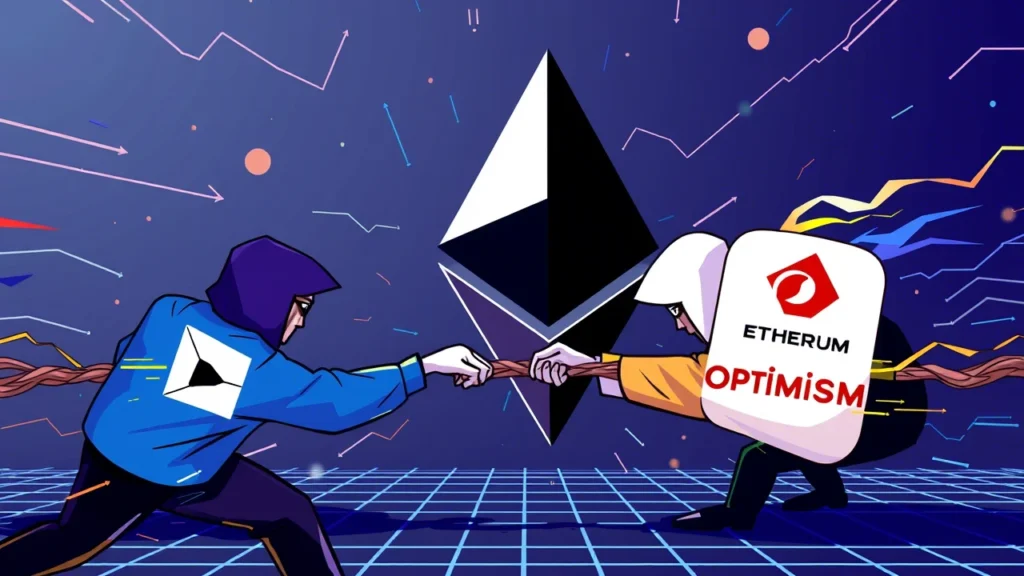Why 2025? This year marks a convergence of pivotal trends: the maturation of decentralized finance (DeFi), the rise of AI-integrated blockchain solutions, and clearer regulatory frameworks that aim to balance innovation with investor protection.
From Bitcoin’s enduring dominance to emerging contenders redefining scalability and utility, the crypto market offers unprecedented opportunities—but not without risks.
In this guide, we cut through the noise to present the Top 10 Cryptocurrencies to Invest in 2025, meticulously curated based on technological prowess, real-world adoption, and growth potential.
Whether you’re a seasoned investor or exploring crypto for the first time, we’ll unpack each contender’s unique value proposition, risks, and the trends positioning them for success in the years ahead.
Buckle up as we dive into the digital assets shaping the future of finance.
1. Bitcoin (BTC)

Introduction
Bitcoin (BTC), the pioneer of cryptocurrencies, remains the most dominant and widely recognized digital asset globally.
Launched in 2009 by the pseudonymous Satoshi Nakamoto, Bitcoin operates on a decentralized blockchain network, offering peer-to-peer transactions without intermediaries.
As of 2025, Bitcoin continues to be a cornerstone of crypto portfolios, but its role as a long-term investment depends on understanding its unique strengths and challenges.
Upsides of Bitcoin

1. Store of Value & Scarcity
Bitcoin’s fixed supply of 21 million coins makes it inherently scarce, positioning it as “digital gold.”
Institutional adoption (e.g., Tesla, MicroStrategy) and its role as a hedge against inflation further solidify its reputation as a long-term store of value.
2. Decentralization & Security
Bitcoin’s decentralized network is secured by proof-of-work (PoW) mining, making it resistant to censorship and hacking.
Its blockchain has never been compromised, earning trust from investors and institutions.
3. Global Liquidity
BTC is the most liquid cryptocurrency, listed on all major exchanges (Binance, Coinbase). High liquidity ensures easy entry/exit for investors.
4. Growing Institutional Adoption
From ETFs to corporate treasuries, institutions like BlackRock and Fidelity now integrate Bitcoin into portfolios, reducing volatility and boosting mainstream legitimacy.
Downsides of Bitcoin

1. High Energy Consumption
Bitcoin mining consumes ~127 terawatt-hours annually, raising environmental concerns. Critics argue PoW’s carbon footprint clashes with global sustainability goals.
2. Price Volatility
Despite its “safe haven” reputation, Bitcoin’s price swings remain extreme. For example, BTC dropped 65% in 2022 during the crypto winter, highlighting short-term risks.
3. Scalability Issues
Bitcoin processes 7 transactions per second (TPS), far slower than rivals like Solana (65,000 TPS). High fees during peak demand (e.g., $50+ per transaction in 2021) limit its utility for micropayments.
4. Regulatory Uncertainty
Governments may impose stricter regulations on Bitcoin mining and trading, as seen with China’s 2021 ban. Tax reporting complexities also deter casual investors.
2. Ethereum (ETH) Coin
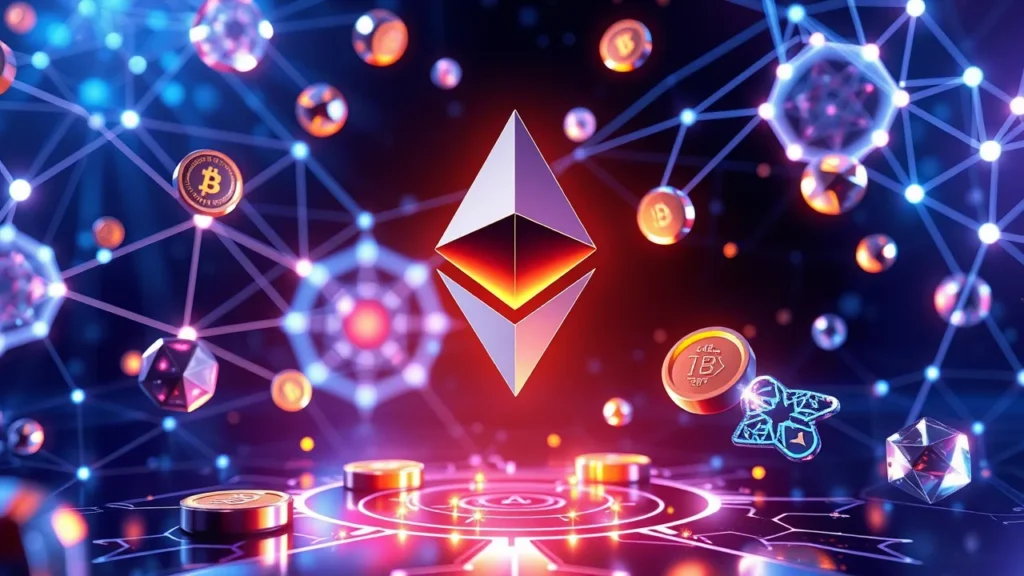
Introduction
Ethereum (ETH), the second-largest cryptocurrency by market cap, revolutionized blockchain technology with its smart contract functionality.
As of 2025, Ethereum’s transition to a proof-of-stake (PoS) consensus model (post-Merge) and its dominance in decentralized finance (DeFi) and NFTs make it a critical player. However, challenges like scalability and regulatory hurdles persist.
Upsides of Ethereum Coin
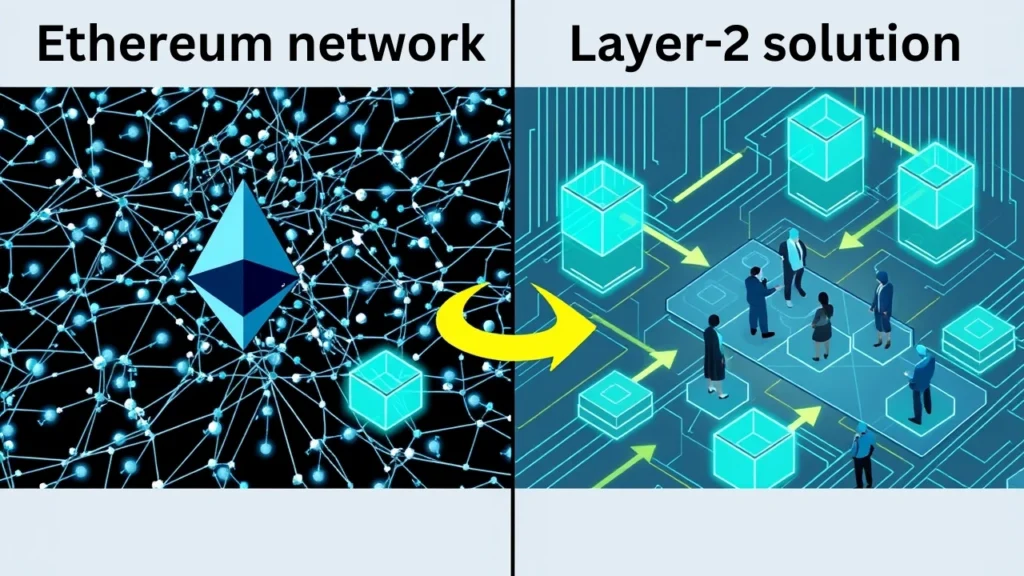
1. Smart Contracts & dApp Ecosystem
Ethereum’s programmable blockchain supports smart contracts, enabling decentralized apps (dApps) like Uniswap, Aave, and OpenSea. Over 4,000 dApps operate on Ethereum, driving its utility as the backbone of Web3.
2. Transition to Proof-of-Stake
The Merge (2022) reduced Ethereum’s energy consumption by 99.95%, addressing environmental concerns and attracting ESG-focused investors.
3. Enterprise Adoption
Major corporations (e.g., Microsoft, JPMorgan) use Ethereum for supply chain management and tokenization. Ethereum Enterprise Alliance (EEA) has 500+ members, boosting institutional trust.
4. Ethereum 2.0 Upgrades
Sharding and layer-2 solutions (e.g., Optimism, Arbitrum) aim to scale Ethereum to 100,000 TPS, reducing gas fees and congestion.
Downsides of Ethereum Coin

1. High Gas Fees
Despite upgrades, Ethereum’s average transaction fee remains 5–5–50 during peak demand, making microtransactions impractical compared to Solana (0.00025)orPolygon(0.00025)orPolygon(0.01).
2. Scalability Challenges
Ethereum processes 15–30 TPS, lagging behind competitors like Cardano (250 TPS) and Avalanche (4,500 TPS). Full sharding implementation is delayed to late 2025.
3. Regulatory Risks
Regulators target Ethereum-based DeFi platforms for non-compliance with KYC/AML laws. The SEC’s 2023 classification of ETH as a security (debated) adds uncertainty.
4. Complexity for New Users
Interacting with dApps (e.g., MetaMask, staking) requires technical knowledge, deterring mainstream adoption.
3. Solana (SOL) Coin
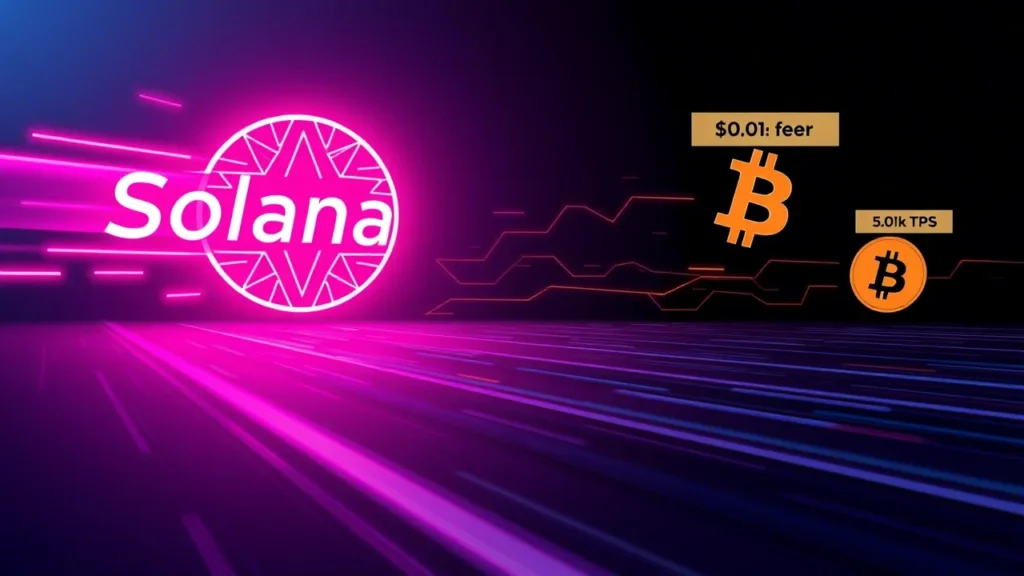
Introduction
Solana (SOL) has emerged as a leading high-performance blockchain, renowned for its lightning-fast transactions and low fees.
By 2025, Solana’s ecosystem spans DeFi, NFTs, and Web3 applications, fueled by its unique Proof-of-History (PoH) consensus.
However, challenges like network instability and centralization risks require careful evaluation for investors.
Upsides of Solana Coin

1. Blazing-Fast Speed & Scalability
Solana processes 65,000 transactions per second (TPS)—far exceeding Ethereum (30 TPS) and Bitcoin (7 TPS)—thanks to its hybrid PoH/PoS model. This makes it ideal for high-frequency trading and real-time applications.
2. Ultra-Low Transaction Costs
Average fees on Solana are **less than 0.01∗∗,enablingmicropaymentsandmassadoption.Forcomparison,Ethereumgasfeesoftenexceed0.01∗∗,enablingmicropaymentsandmassadoption.Forcomparison,Ethereumgasfeesoftenexceed 5 during peak usage.
3. Thriving Ecosystem
Solana hosts 1,000+ projects, including top NFT platforms (Magic Eden) and DeFi protocols (Raydium, Orca). Its developer-friendly environment attracts innovators, with 15% of all new crypto projects launching on Solana in 2024.
4. Institutional Backing
Major investors like Andreessen Horowitz and FTX Ventures have funded Solana’s growth. Partnerships with Visa (2023) and Google Cloud (2024) bolster its credibility.
Downsides of Solana Coin

1. Network Outages
Solana has faced 10+ major outages since 2021, including a 48-hour downtime in 2022. Critics argue its speed compromises decentralization and reliability.
2. Centralization Concerns
Running a Solana validator requires expensive hardware (128GB RAM), leading to fewer validators (~2,000 vs. Ethereum’s 800,000+), raising centralization risks.
3. Competition from Layer-2 Blockchains
Ethereum’s Arbitrum and Polygon 2.0 offer comparable speeds with better security, threatening Solana’s niche.
4. Security Vulnerabilities
Solana’s ecosystem has suffered hacks, including the $320M Wormhole bridge exploit (2022). Its rapid growth attracts exploiters targeting smart contract flaws.
4. Ripple (XRP) Coin

Introduction
Ripple (XRP) stands out as a blockchain protocol designed for fast, low-cost cross-border payments, partnering with banks and financial institutions like Santander and Bank of America.
Despite its utility in global remittances, XRP faces challenges like regulatory uncertainty due to its ongoing SEC lawsuit and concerns over centralization.
As of 2025, its role in institutional finance remains pivotal but contentious.
Upsides of Ripple Coin
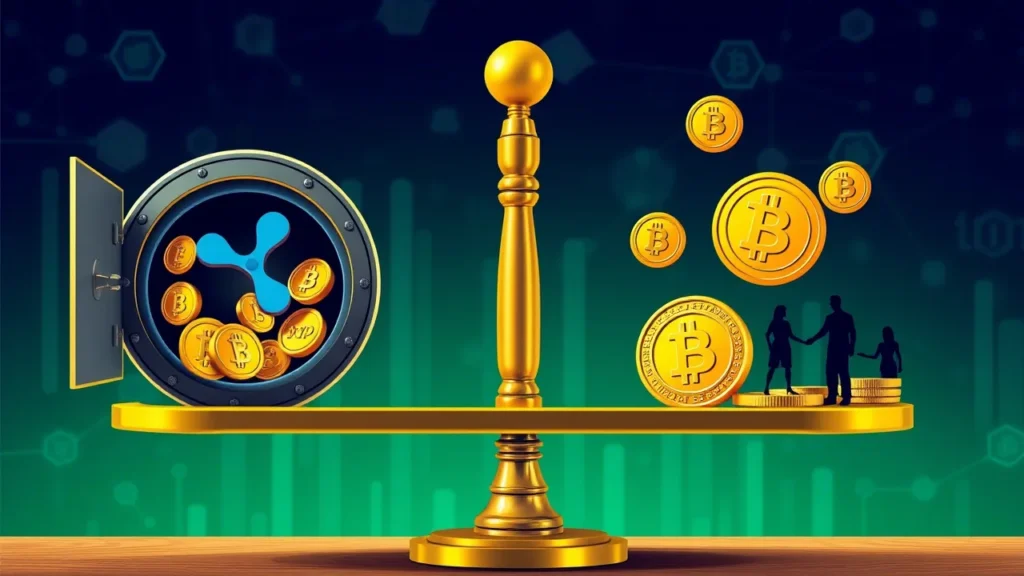
1. Speed & Cost Efficiency
XRP settles transactions in 3–5 seconds at an average cost of **0.0002∗∗,outperformingtraditionalsystemslikeSWIFT(2–5days,0.0002∗∗,outperformingtraditionalsystemslikeSWIFT(2–5days,30–$50 fees).
This makes it ideal for real-time remittances and liquidity management.
2. Institutional Partnerships
RippleNet, Ripple’s payment network, serves 300+ financial institutions globally, including SBI Remit and MoneyGram.
Its On-Demand Liquidity (ODL) product uses XRP to reduce pre-funded accounts, saving institutions $10B+ annually.
3. Energy Efficiency
Unlike Bitcoin’s PoW, Ripple uses a Consensus Protocol that consumes negligible energy, aligning with ESG goals.
4. Regulatory Clarity Progress
In 2023, Ripple won a partial victory against the SEC, with a court ruling that XRP is not a security when sold to retail investors.
This boosted market confidence and exchange re listings (e.g., Coinbase).
Downsides of Ripple Coin

1. SEC Lawsuit Uncertainty
Despite partial wins, the SEC’s appeal (2025) keeps XRP’s legal status ambiguous.
A loss could classify XRP as a security, forcing delistings and fines.
2. Centralization Concerns
Ripple Labs holds ~45B XRP (45% of total supply) in escrow, raising fears of market manipulation.
Critics argue the protocol’s validators (35 nodes) are mostly Ripple-affiliated, reducing decentralization.
3. Limited Retail Use Cases
XRP’s utility focuses on institutions, not retail users. It lacks smart contracts, DeFi, or NFT ecosystems, limiting growth compared to Ethereum or Solana.
4. Banking Sector Competition
SWIFT’s CBDC initiatives and Stellar (XLM) threaten Ripple’s niche. Only 10% of RippleNet partners actively use XRP for liquidity.
5. Polygon (MATIC) Coin

Introduction
Polygon (MATIC) has solidified its position as a leading Ethereum Layer-2 scaling solution, addressing high gas fees and slow transaction speeds.
By 2025, its ecosystem spans DeFi, NFTs, and enterprise blockchain adoption.
However, challenges like centralization risks and dependency on Ethereum’s success require careful analysis for investors.
Upsides of Polygon Coin

1. Ethereum Scalability & Low Fees
Polygon reduces Ethereum’s transaction costs to 0.01–0.01–0.10 and boosts speeds to 7,000 TPS via PoS sidechains. Over 50,000 dApps (e.g., Aave, OpenSea) use Polygon for affordable scalability.
2. Polygon 2.0 Upgrades
The 2023–2025 roadmap introduces zkEVM integration, unified liquidity across chains, and a reimagined governance model, positioning MATIC as a hub for Web3 interoperability.
3. Enterprise & Institutional Adoption
Major brands like Nike, Starbucks, and Meta use Polygon for NFTs and loyalty programs. Polygon’s partnerships with Google Cloud and Nubank (2024) enhance credibility.
4. Sustainability Focus
Polygon’s 2022 carbon-neutral pledge and shift to zk-proofs (99% energy reduction vs. PoW) attract ESG-focused investors.
Downsides of Polygon Coin

1. Centralization Concerns
Polygon’s PoS relies on ~100 validators, compared to Ethereum’s 800,000+. Critics argue this creates single points of failure and governance risks.
2. Dependency on Ethereum
If Ethereum loses dominance to Solana or Cardano, Polygon’s utility diminishes. Only 15% of Ethereum dApps use Polygon for scaling.
3. Competitive Pressure
Rival Layer-2s like Arbitrum and Optimism offer comparable speeds/fees with deeper Ethereum integration, threatening Polygon’s market share.
4. Tokenomics Uncertainty
MATIC’s transition to POL (Polygon 2.0) introduces staking and governance changes, risking short-term price volatility.
6. Dogecoin (DOGE)

Introduction
Dogecoin (DOGE), initially created as a meme coin in 2013, has evolved into a cultural phenomenon with a passionate community.
By 2025, DOGE retains its status as a top 20 cryptocurrency, fueled by celebrity endorsements (e.g., Elon Musk) and adoption for microtransactions.
However, its lack of utility, inflationary supply, and volatility make it a high-risk, speculative investment.
Upsides of Dogecoin

1. Strong Community & Viral Appeal
Dogecoin’s “Doge Army” drives its popularity, with 5M+ active holders.
Elon Musk’s tweets (e.g., “Tesla accepts DOGE”) and events like the 2024 Super Bowl ad spike demand.
2. Low Transaction Fees & Speed
DOGE processes transactions for 0.002–0.002–0.05 in 1–5 minutes, outperforming Bitcoin (1–1–50 fees, 10+ minutes).
This makes it practical for tips, donations, and small purchases.
3. Mainstream Adoption
Major brands like Tesla, AMC Theatres, and Newegg accept DOGE. The X (Twitter) tipping feature (2025) further boosts everyday use.
4. Infinite Supply & Accessibility
DOGE’s 5B annual inflation prevents hoarding, keeping prices low for newcomers. Its 0.10–0.10–0.20 range (2025) appeals to retail investors.
Downsides of Dogecoin

1. No Intrinsic Utility
DOGE lacks smart contracts, DeFi, or NFTs, relying solely on hype. Only 2% of DOGE holders use it for transactions beyond speculation.
2. Inflationary Supply
Uncapped supply (132B DOGE in 2025) creates constant sell pressure, unlike Bitcoin’s scarcity. Annual inflation (~3.8%) erodes long-term value.
3. Extreme Volatility
DOGE’s price swings 30–50% monthly, driven by social media trends. For example, it crashed 60% in 2022 after Musk paused Tesla’s DOGE payments.
4. Centralization Risks
Just 10 wallets hold 65% of DOGE supply, raising manipulation concerns. Developers have no major upgrades planned post-2025.
7. Cardano (ADA) Coin

Introduction
Cardano (ADA), founded by Ethereum co-creator Charles Hoskinson, is a third-generation blockchain focused on sustainability, scalability, and peer-reviewed research.
By 2025, Cardano’s ecosystem has expanded into DeFi, governance, and real-world use cases in Africa.
However, its slow development pace and competition from faster chains like Solana pose challenges for investors.
Upsides of Cardano Coin

1. Peer-Reviewed, Scientific Approach
Cardano’s upgrades (e.g., Alonzo for smart contracts) are rigorously tested and academically validated, reducing risks of bugs or exploits.
Over 500+ research papers back its Ouroboros PoS protocol.
2. Energy Efficiency & Sustainability
Cardano’s PoS consensus consumes 0.01% of Bitcoin’s energy, aligning with ESG goals.
Its partnership with Veritree (30M trees planted via ADA staking rewards) boosts eco-friendly credibility.
3. Scalability with Hydra
Hydra, Cardano’s Layer-2 solution, enables 1M TPS per node (2025), rivaling Solana.
Transaction fees remain stable at 0.10–0.10–0.30, even during network congestion.
4. Governance & Decentralization
Cardano’s Voltaire era (2025) lets ADA holders vote on protocol upgrades, ensuring community-driven development.
Over 70% of ADA is staked across 3,000+ pools.
Downsides of Cardano Coin

1. Slow Development Pace
Cardano’s methodical rollout delays key features. For example, Hydra’s full deployment is slated for late 2025, years behind competitors like Solana.
2. Limited DeFi Ecosystem
Only 200+ dApps run on Cardano (vs. 4,000+ on Ethereum), with TVL at $2B (2025). Major DeFi protocols like Uniswap and Aave avoid Cardano due to smaller user bases.
3. Regulatory Uncertainty
Regulators may classify ADA as a security due to its pre-mined supply (45B ADA). The SEC’s 2024 lawsuit against similar tokens (e.g., Algorand) sets a risky precedent.
4. Competition from Faster Chains
Solana (65k TPS) and Avalanche (4.5k TPS) outperform Cardano’s 250 TPS (pre-Hydra), limiting its appeal for high-frequency applications.
8. Near Protocol (NEAR) Coin

Introduction
Near Protocol (NEAR) is a high-performance, developer-friendly blockchain designed for scalability and usability, leveraging sharding technology (Nightshade) to achieve 100,000+ TPS.
By 2025, NEAR’s ecosystem spans DeFi, NFTs, and enterprise Web3 solutions. However, challenges like competition and tokenomics risks require careful evaluation for investors.
Upsides of Near Protocol Coin

1. Scalability via Nightshade Sharding
NEAR’s unique sharding architecture enables 100,000+ TPS with sub-2-second finality, outperforming Ethereum and Solana.
This allows seamless scaling for dApps like Aurora (EVM-compatible layer) and Mintbase (NFT platform).
2. Developer-First Ecosystem
NEAR supports Rust, AssemblyScript, and JavaScript, attracting 20,000+ developers by 2025. Grants from the NEAR Foundation and partnerships with Google Cloud (2024) foster innovation in DeFi and gaming.
3. Low Transaction Costs
Fees average **0.01pertransaction∗∗,
making NEAR ideal for micro transactions and mass adoption. For comparison, Ethereum’s gas fees often exceed 0.01per transaction∗∗, making NEAR ideal for micro transactions and mass adoption. For comparison, Ethereum’s gas fees often exceed 5 during peak usage.
4. Carbon-Neutral Blockchain
NEAR’s PoS consensus uses 0.006 kWh per transaction (vs. Bitcoin’s 1,173 kWh), aligning with ESG goals. It partners with ClimateTrade to offset remaining emissions.
Downsides of Near Protocol Coin

1. Nascent Ecosystem
NEAR hosts 500+ dApps (2025), far fewer than Ethereum (4,000+) or Solana (1,000+). TVL remains modest at $3B, limiting liquidity for DeFi users.
2. Competition from Ethereum L2s
Rival scaling solutions like Polygon zkEVM and Arbitrum offer deeper Ethereum integration, diverting developer attention. Only 15% of Ethereum dApps bridge to NEAR.
3. Token Inflation Risks
NEAR’s uncapped supply (1.1B tokens in 2025) and 5% annual inflation dilute holder value, unlike deflationary tokens like Bitcoin.
4. Centralization Concerns
The NEAR Foundation controls 40% of staked tokens, raising governance risks. Just 50 validators secure the network vs. Ethereum’s 800,000+.
9. Avalanche (AVAX) Coin

Introduction
Avalanche (AVAX) is a high-speed, customizable blockchain platform solving the blockchain trilemma (scalability, security, decentralization) with its unique consensus mechanism.
By 2025, Avalanche’s subnets and institutional adoption (e.g., JPMorgan, Deloitte) position it as a leader in enterprise DeFi and Web3. However, competition and subnet complexity pose risks for investors.
Upsides of Avalanche Coin

1. Sub-Second Finality & High Throughput
Avalanche processes 4,500 TPS with <1-second transaction finality, outperforming Ethereum (15 TPS, 5+ minutes) and Solana (65k TPS but frequent downtime). This speed supports real-time trading and institutional use cases.
2. Customizable Subnets
Avalanche’s subnet feature lets enterprises build tailored blockchains (e.g., JPMorgan’s Onyx for tokenized assets). Over 50 subnets (2025) drive niche adoption in gaming, DeFi, and supply chains.
3. Growing DeFi Ecosystem
Avalanche hosts 200+ DeFi protocols (TVL: $12B in 2025), including Trader Joe and Benqi. Its Bridge connects to Ethereum, Bitcoin, and Cosmos, enabling cross-chain liquidity.
4. Institutional Partnerships
Collaborations with Deloitte (disaster recovery platforms) and AWS (blockchain node hosting) validate Avalanche’s enterprise potential.
Downsides of Avalanche Coin

1. Subnet Complexity & Costs
Launching a subnet requires 10,000+ AVAX ($200,000+ in 2025), deterring small developers. Managing multiple subnets increases technical overhead.
2. Competition from Rival Chains
Polkadot’s parachains and Cosmos’ IBC protocol offer similar interoperability, splitting developer attention. Only 20% of subnets (2025) host active dApps.
3. Token Inflation Risks
AVAX’s capped supply of 720M tokens includes staking rewards, with 2–3% annual inflation until 2030. This dilutes value compared to deflationary tokens like Bitcoin.
4. Centralization in Validator Network
Avalanche relies on 1,200 validators (vs. Ethereum’s 800,000+), with 60% of staked AVAX controlled by top 10 entities, raising governance concerns.
10. Shiba Inu (SHIB) Coin

Introduction
Shiba Inu (SHIB), initially launched as a Dogecoin-inspired meme token, has evolved into a decentralized ecosystem with ambitions beyond viral hype.
By 2025, SHIB’s Shibarium layer-2 network, token burns, and metaverse projects aim to add utility, but its speculative nature, inflationary supply, and reliance on community sentiment make it a high-risk investment.
Upsides of Shiba Inu Coin

1. Strong Community & Brand Recognition
SHIB’s “Shib Army” includes 1.3M+ holders (2025), driving viral campaigns like #ShibariumLaunch. Celebrity endorsements (e.g., Vitalik Buterin’s early involvement) and Elon Musk’s tweets periodically spike demand.
2. Shibarium Layer-2 Network
Shibarium reduces Ethereum gas fees by 90%+ (avg. fee: $0.001), enabling affordable transactions for SHIB, LEASH, and BONE tokens. Over 500 dApps (2025) now operate on Shibarium, including gaming and DeFi projects.
3. Token Burns & Deflationary Mechanics
SHIB’s auto-burn feature destroys tokens with every transaction. By 2025, 410T+ SHIB (41% of initial supply) has been burned, creating scarcity and upward price pressure.
4. Expanding Ecosystem
The SHIB ecosystem includes:
- ShibaSwap DEX ($1.2B TVL in 2025).
- Shib: The Metaverse (virtual land sales and NFT integrations).
- Shiba Eternity (blockchain game with 500K+ active users).
Downsides of Shiba Inu Coin

1. Hyperinflationary Supply
Despite burns, SHIB’s total supply remains 589T+ (2025). Even burning 1T/month would take 500+ years to reach Bitcoin-like scarcity.
2. Extreme Volatility
SHIB’s price swings 50–70% monthly on social media trends. For example, it crashed 80% in 2022 after Musk distanced himself from meme coins.
3. Competition from Newer Meme Coins
Tokens like BONK and FLOKI replicate SHIB’s model with faster burns or niche utilities, splitting investor attention.
4. Regulatory Scrutiny
Regulators may target SHIB as a “security” due to its centralized development team and speculative trading. The SEC’s 2024 lawsuit against similar tokens sets a precedent.
Understanding Cryptocurrencies
Dive into the fundamentals of digital currencies and their evolving ecosystem.
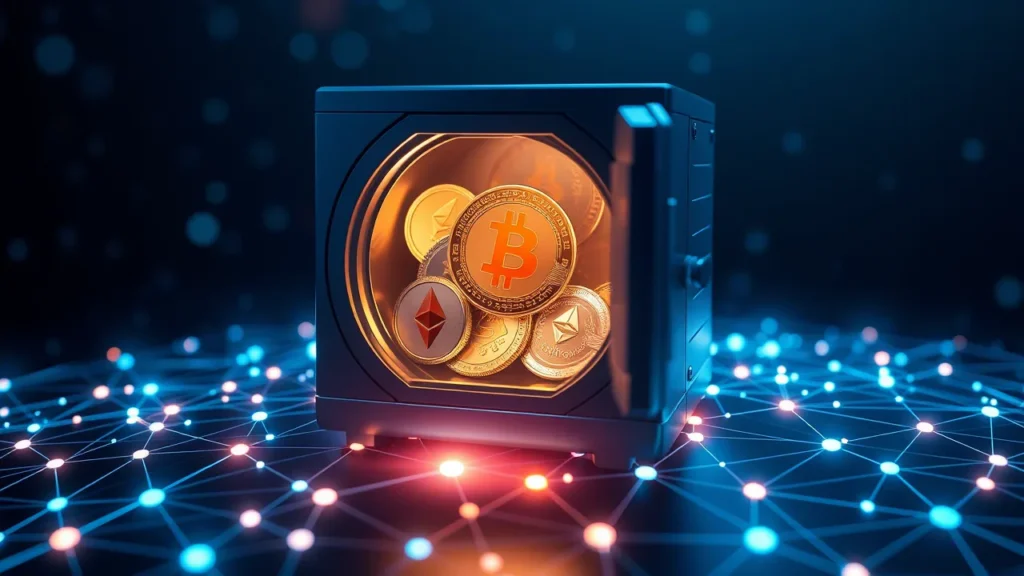
What Are Cryptocurrencies?
Cryptocurrencies are decentralized digital assets secured by cryptography, operating on blockchain technology—a transparent, immutable ledger.
Unlike traditional currencies, they are not controlled by governments or banks. Bitcoin (2009) pioneered this space as “digital gold,” while others like Ethereum expanded functionality with smart contracts, enabling decentralized apps (dApps) and DeFi. Key traits include:
- Decentralization: No central authority (e.g., Bitcoin’s global node network).
- Transparency: All transactions are publicly recorded on the blockchain.
- Scarcity: Many have capped supplies (e.g., Bitcoin’s 21 million limit).
How Does Cryptocurrency Work?
Cryptocurrencies rely on blockchain technology, where transactions are grouped into “blocks,” validated by network participants, and chained chronologically. Key mechanisms:
- Consensus Protocols:
- Proof of Work (PoW): Miners solve puzzles to validate transactions (used by Bitcoin).
- Proof of Stake (PoS): Validators stake tokens to secure the network (used by Ethereum post-Merge).
- Wallets & Keys: Users store crypto in digital wallets, accessed via public keys (addresses) and private keys (passwords).
- Mining/Staking: PoW miners earn rewards for validating blocks; PoS validators earn fees for staking tokens.
Why Are There So Many Cryptocurrencies?
The crypto landscape has exploded to over 25,000 coins (2025) due to:
- Diverse Use Cases:
- Payment Coins: Bitcoin (decentralized money), Litecoin (faster transactions).
- Smart Contract Platforms: Ethereum, Solana (dApps, NFTs).
- Meme Coins: Dogecoin, Shiba Inu (community-driven hype).
- Innovation & Competition: New blockchains address flaws (e.g., Solana’s speed vs. Ethereum’s fees).
- Ease of Creation: Platforms like Ethereum let anyone launch tokens via ERC-20 standards.
- Speculation & Fundraising: ICOs, IDOs, and NFTs drive speculative projects.
Risks: Many coins fail (e.g., 90% of 2021 NFTs lost value), and scams abound.
Investment Considerations
Navigate the crypto market with informed strategies and risk-aware decisions.
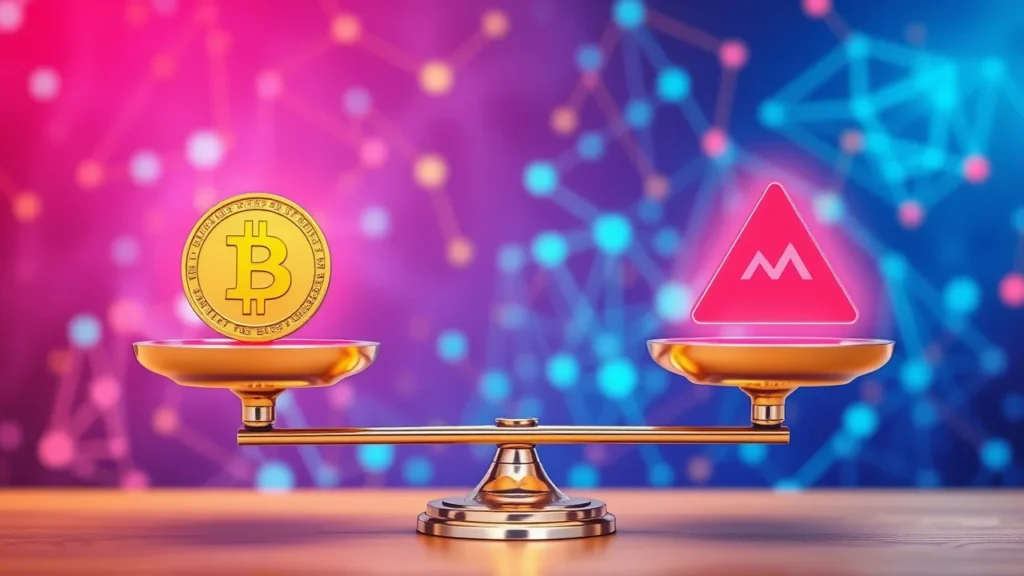
Pros and Cons of Cryptocurrency
Pros:
- High Growth Potential: Assets like Bitcoin and Ethereum have delivered 100x+ returns over a decade.
- Decentralization: No central authority (e.g., banks) controls transactions or supply.
- Innovation: Powers DeFi, NFTs, and smart contracts (e.g., Ethereum’s $50B+ DeFi TVL in 2025).
- Accessibility: 24/7 global markets; invest with as little as $10.
Cons:
- Volatility: Bitcoin dropped 65% in 2022; meme coins like SHIB can swing 50% daily.
- Regulatory Risks: SEC lawsuits (e.g., Ripple, 2023) and CBDC competition.
- Security Threats: $3.8B lost to hacks in 2024 (e.g., cross-chain bridge exploits).
- Environmental Impact: PoW coins (e.g., Bitcoin) use ~0.5% of global energy.
How to Choose the Best Crypto to Invest In ?
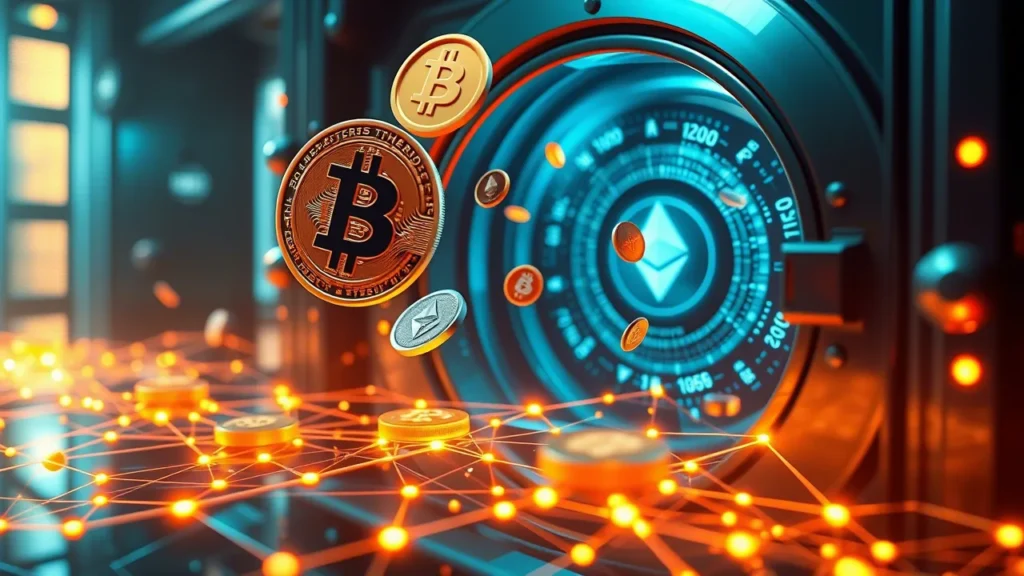
Understand Value
Evaluate a cryptocurrency’s intrinsic value using:
- Market Cap: Prioritize top 50 coins (e.g., BTC, ETH, SOL) for liquidity.
- Use Case: Ethereum for smart contracts, Chainlink for oracles, Filecoin for storage.
- Tokenomics: Check max supply (e.g., Bitcoin’s 21M) and inflation rates (e.g., ETH’s 0.5% post-Merge).
- Adoption: Partnerships (e.g., Polygon with Starbucks) and user growth (e.g., Solana’s 10M active wallets).
Recognize Risk
Mitigate risks by:
- Diversifying: Allocate 5–10% of your portfolio to crypto; balance blue-chips (BTC, ETH) with alts (SOL, DOT).
- Assessing Volatility: Stablecoins (USDC, USDT) hedge against swings.
- Monitoring Regulation: Follow SEC/G20 updates (e.g., MiCA laws in the EU).
- Avoiding Scams: Verify projects with audits (e.g., CertiK) and avoid “guaranteed returns” schemes.
Research Your Cryptocurrency
Follow this checklist:
- Whitepaper: Read for technical depth (e.g., Avalanche’s Snow consensus).
- Team & Backers: Look for doxxed teams (e.g., Cardano’s Charles Hoskinson) and VC funding (e.g., Solana’s a16z).
- Community: Active GitHub repos (1k+ commits) and Reddit/Twitter engagement.
- Exchanges: Prioritize coins on Binance/Coinbase for liquidity.
- Tools: Use CoinGecko for metrics and Etherscan for on-chain data.
How to Invest in Cryptocurrency ?
Decide How Much to Invest
- Risk-Adjusted Allocation: Limit crypto to 5–10% of your total portfolio. For example, allocate 70% to blue-chips (BTC, ETH) and 30% to alts (SOL, DOT).
- Dollar-Cost Averaging (DCA): Invest fixed amounts weekly/monthly to mitigate volatility (e.g., $100/month into Bitcoin).
- Emergency Fund First: Ensure 3–6 months of savings before crypto investments.
Find a Cryptocurrency Exchange
- Security: Choose exchanges with 2FA, cold storage (e.g., Coinbase, Binance), and insurance (e.g., Gemini’s $300M coverage).
- Fees: Compare spot fees (0.1–0.5%) and withdrawal costs. Kraken Pro (0.16%) vs. Crypto.com (0.4%).
- Supported Coins: Prioritize platforms with 100+ coins (Binance, KuCoin) for flexibility.
- Regulatory Compliance: Opt for licensed exchanges (e.g., Coinbase SEC-compliant) to avoid shutdowns.
Watch Out for Scams
- Red Flags:
- Phishing Sites: Fake URLs (e.g., “Coinbasse.com”).
- Rug Pulls: 80% of 2023 meme coins collapsed post-launch.
- Fake Giveaways: “Send 1 ETH, get 2 ETH back” scams.
- Prevention:
- Use hardware wallets (Ledger, Trezor) for large holdings.
- Verify contracts on Etherscan and audit reports (CertiK).
Long-Term Investment Benefits
What Is a Long-Term Cryptocurrency Investment?
Long-term investing (HODLing) involves holding assets for 3+ years through market cycles. Examples:
- Bitcoin: Grew from 1(2011)to1(2011)to60,000+ (2025).
- Ethereum: Rose from 0.31(2015)to0.31(2015)to4,000+ (2025) post-Merge.
- Key Strategy: Focus on projects with strong fundamentals (e.g., Solana’s institutional adoption).
Benefits of Holding Crypto Long-Term
- Compounding Gains: Staking ETH (5% APR) or SOL (7% APR) grows holdings passively.
- Reduced Tax Burden: Long-term capital gains taxes (15–20%) vs. short-term (30%+).
- Network Effects: Early adoption in ecosystems like Avalanche subnets or Polygon’s zkEVM.
- Volatility Smoothing: Bitcoin’s 10-year CAGR is 120% despite 80% drawdowns.
Financial and Legal Aspects of Cryptocurrency
Navigate costs, tax obligations, and compliance to invest wisely and legally.
How Much Does It Cost to Buy Cryptocurrency?
Buying cryptocurrency involves several costs, which vary by platform and payment method:
- Exchange Fees:
- Trading Fees: Ranges from 0.1% (Binance) to 1.5% (Coinbase) per transaction.
- Spread: The difference between buy/sell prices; often 0.5–2% on platforms like Robinhood.
- Payment Method Fees:
- Credit/Debit Cards: 3–5% (e.g., Coinbase charges 3.99%).
- Bank Transfers: Often free or <1%.
- Network Fees:
- Ethereum Gas Fees: 1–1–50 (fluctuates with network congestion).
- Bitcoin Transaction Fees: 2–2–30 (depends on blockchain traffic).
- Withdrawal Fees:
- Varies by exchange (e.g., 0.50–0.50–5 for ETH withdrawals on Binance).
Cost-Saving Tips:
- Use DEXs (e.g., Uniswap) for lower fees, but expect higher slippage.
- Opt for limit orders to avoid spread costs.
- Choose low-fee coins like Litecoin or Solana for transfers.
How to Report Crypto on Taxes?
In the U.S., the IRS treats crypto as property, requiring detailed reporting:
- Taxable Events:
- Selling crypto for fiat (e.g., USD).
- Trading crypto-to-crypto (e.g., ETH to SOL).
- Spending crypto on goods/services.
- Earning crypto via staking, mining, or airdrops (taxed as income).
- Forms to File:
- Form 8949: Report capital gains/losses.
- Schedule D: Summarize total gains/losses.
- Schedule 1: Report crypto income (e.g., staking rewards).
- Tools for Compliance:
- Use tax software like CoinTracker or Koinly to auto-generate reports.
- Track cost basis (purchase price) and fair market value at sale.
Do I Have to Pay Taxes for Investing in Crypto?
Yes, in most jurisdictions. Key U.S. tax rules for 2025:
- Capital Gains Tax:
- Short-Term (held <1 year): Taxed at ordinary income rates (10–37%).
- Long-Term (held >1 year): Taxed at 0–20%, depending on income.
- Tax-Free Events:
- Transferring crypto between your own wallets.
- Donating crypto to qualified charities.
- Loss Harvesting: Offset gains with losses (max $3,000/year deduction against income).
Penalties: Failure to report can result in fines (25% of unpaid taxes) or audits.
Additional Promising Cryptocurrencies for 2025
Explore emerging contenders with unique value propositions for the future.
1. Chainlink (LINK)

Upsides of Chainlink
Chainlink (LINK) is the backbone of decentralized oracle networks, enabling smart contracts to securely interact with real-world data like price feeds, weather data, and IoT inputs. By 2025, its dominance in the oracle space is bolstered by:
- Enterprise Adoption: Partnerships with SWIFT and Google Cloud for hybrid smart contracts in tradFi.
- Cross-Chain Expansion: Supports 30+ blockchains, including Ethereum, Solana, and Polkadot.
- LINK Staking v2: Offers 5–7% APY, attracting long-term holders.
- DeFi Reliance: Powers 80% of DeFi projects, including Aave and Synthetix.
Downsides of Chainlink
- Centralization Risks: 60% of nodes are operated by institutional entities, raising trust concerns.
- Competition: Rivals like Band Protocol and API3 offer lower fees for niche use cases.
- Token Utility: LINK’s primary use (paying node operators) limits speculative demand.
2. Polkadot (DOT)
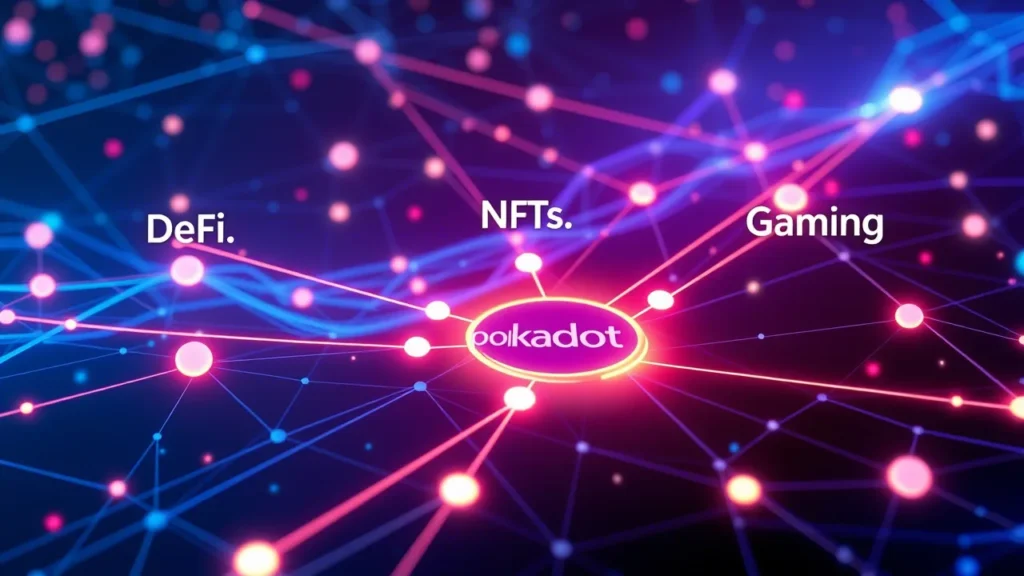
Upsides of Polkadot
Polkadot (DOT) thrives as a multi-chain ecosystem, enabling seamless communication between blockchains via parachains. Key 2025 advantages:
- Parachain Growth: 100+ parachains (e.g., Moonbeam, Acala) drive interoperability in DeFi and gaming.
- Governance Model: DOT holders vote on upgrades, ensuring decentralized decision-making.
- Energy Efficiency: Polkadot’s NPoS consensus uses 99% less energy than Ethereum pre-Merge.
- Institutional Interest: JPMorgan’s Onyx uses Polkadot for tokenized asset settlements.
Downsides of Polkadot
- Complexity: Developers face steep learning curves for Substrate framework.
- DOT Inflation: 7–10% annual staking rewards dilute long-term value.
- Ecosystem Fragmentation: Competing parachains may cannibalize user bases.
3. Aave (AAVE)
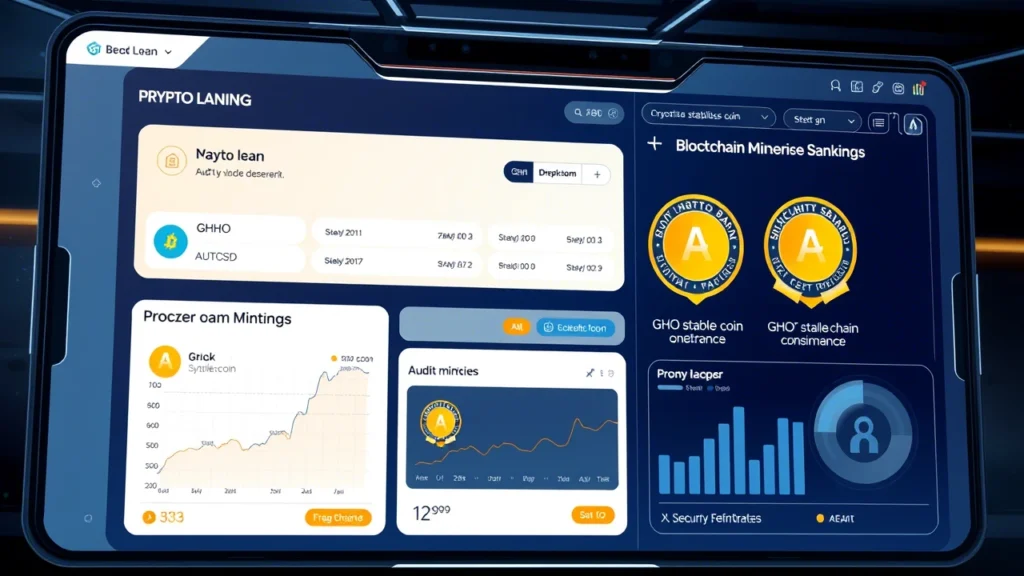
Upsides of Aave
Aave (AAVE) remains a DeFi titan with its decentralized lending/borrowing protocol. By 2025, it stands out due to:
- Multi-Chain Presence: Deployed on Ethereum, Polygon, and Avalanche, serving 500K+ users.
- Innovative Products: Flash loans, GHO stablecoin, and institutional vaults (e.g., BlackRock’s Aave integration).
- Safety Mechanisms: 85% of deposits insured via Aave Arc and smart contract audits.
- Governance Rewards: AAVE stakers earn 3–5% APY + protocol fee shares.
Downsides of Aave
- Regulatory Risks: SEC scrutiny over GHO’s classification as a security.
- Market Dependency: Collateral liquidations spike during crypto crashes (e.g., 40% in 2024’s bear market).
- Competition: Compound and MakerDAO offer lower borrowing rates for blue-chip assets.
Crypto Frequently Asked Questions (FAQs)
Get clarity on critical crypto queries for informed 2025 investment decisions.

1.) What Are the Best Cryptocurrencies to Invest in 2025?
The top contenders include Bitcoin (BTC), Ethereum (ETH), Solana (SOL), and Polygon (MATIC) for their proven utility, scalability, and institutional adoption. Emerging projects like Avalanche (AVAX) and Polkadot (DOT) also show promise.
2.) Which Crypto Has 1000x Potential?
High-risk, high-reward tokens like Chainlink (LINK) (oracle dominance), Aave (AAVE) (DeFi innovation), or newer Layer-1s (e.g., Sui Network) could offer exponential growth. However, 90% of such projects fail—research thoroughly.
3.) How Does Trading Crypto Differ from Stocks?
- Market Hours: Crypto trades 24/7; stocks follow exchange hours (9:30 AM–4 PM EST).
- Volatility: Crypto swings 10–30% daily; stocks average 1–5%.
- Regulation: Crypto markets are less regulated; stocks comply with SEC/FINRA rules.
- Ownership: Crypto = direct asset ownership; stocks = equity shares in companies.
4.) Are There Cryptocurrency ETFs?
Yes! Spot Bitcoin ETFs (e.g., BlackRock’s IBIT) and Ethereum ETFs (e.g., Fidelity’s FETH) are approved in 2024. They offer indirect exposure without managing private keys.
5.) What Are Altcoins?
Altcoins are alternatives to Bitcoin, including:
- Ethereum (ETH): Smart contract pioneer.
- Stablecoins (USDT, USDC): Pegged to fiat.
- Meme Coins (DOGE, SHIB): Community-driven hype.
- Utility Tokens (LINK, UNI): Power specific ecosystems.
6.) Why Is Bitcoin Valuable?
- Scarcity: Capped supply of 21 million.
- Decentralization: No central authority.
- Store of Value: “Digital gold” narrative.
- Institutional Adoption: ETFs, corporate treasuries (e.g., MicroStrategy’s $10B BTC holdings).

